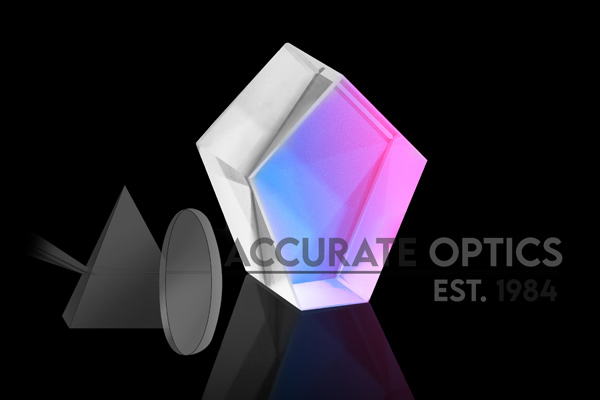Boosting Light Transmission Efficiency Through a Pentaprism
Table of Contents
Pentaprisms, with their ability to manipulate light paths, play a crucial role in various optical systems. To optimize their performance, it is essential to enhance the efficiency of light transmission through these prisms. This blog delves into the techniques and methods used to maximize the effectiveness of light transmission in pentaprisms, thereby unlocking their full potential.
1. Precision Prism Manufacturing:
The first step in enhancing light transmission efficiency is to ensure the production of high-quality pentaprisms. Employing advanced manufacturing techniques, such as precision grinding and polishing, helps achieve optically precise surfaces. This reduces surface imperfections and minimizes light scattering, resulting in improved transmission efficiency.
2. Anti-Reflection Coatings:
Applying anti-reflection coatings to the surfaces of the pentaprism significantly enhances its light transmission capabilities. These specialized coatings minimize the reflections and losses that occur when light encounters different interfaces within the prism. By reducing unwanted reflections, more light can be transmitted through the prism, increasing overall efficiency.
3. Optimized Prism Geometry:
The design and geometry of the pentaprism play a crucial role in maximizing light transmission efficiency. By carefully selecting the angles and dimensions of the prism’s faces, it is possible to minimize internal reflections and losses. Optimized geometries, such as smaller face angles and precise face alignments, help steer light more efficiently through the prism, minimizing energy loss.
4. Total Internal Reflection (TIR):
Leveraging the phenomenon of total internal reflection is a key technique for enhancing light transmission through pentaprisms. By ensuring that the incident angle of light exceeds the critical angle for the prism material, TIR occurs, enabling efficient light propagation within the prism. Minimizing deviations from the critical angle and ensuring internal reflections occur within the prism are essential for maximizing transmission efficiency.
5. Index-Matching Fluids or Gels:
Introducing index-matching fluids or gels between the prism surfaces and the surrounding medium can improve light transmission. These materials have refractive indices similar to that of the prism, reducing the refraction and reflection that occur at the interface. By minimizing losses at the prism-medium boundary, the efficiency of light transmission is enhanced.
6. Surface Quality and Coating Maintenance:
Regular maintenance and upkeep of the prism’s surfaces and coatings are vital for sustained high transmission efficiency. Surface contaminants, scratches, or degradation of coatings can lead to increased scattering and reflections, negatively impacting light transmission. Proper cleaning and care ensure optimal performance and longevity of the prism’s efficiency.
7. Alignment and Mounting Techniques:
Accurate alignment and stable mounting of the pentaprism within the optical system are crucial for maximizing light transmission efficiency. Misalignment can cause light to deviate from the intended path, leading to increased losses. Precise alignment and secure mounting techniques, such as precision fixturing and adhesive bonding, ensure minimal disruptions and improved transmission.
8. Quality Materials and Refractive Index Homogeneity:
Choosing high-quality materials for pentaprisms is paramount. Materials with excellent transparency, low absorption, and high refractive index homogeneity offer enhanced light transmission capabilities. Uniform refractive index throughout the prism minimizes refraction and reflection variations, enabling consistent and efficient light propagation.
Conclusion:
Efficient light transmission through pentaprisms is key to unlocking their full potential in optical systems. Through precision manufacturing, anti-reflection coatings, optimized geometry, TIR, index-matching fluids, surface maintenance, precise alignment, and quality materials, the efficiency of light transmission can be greatly enhanced. By employing these techniques and methods, optical systems can benefit from increased brightness, reduced losses, and improved overall performance. As advancements in materials and manufacturing processes continue, the quest for even higher transmission efficiency.








